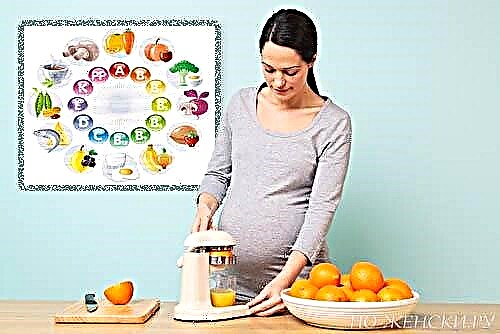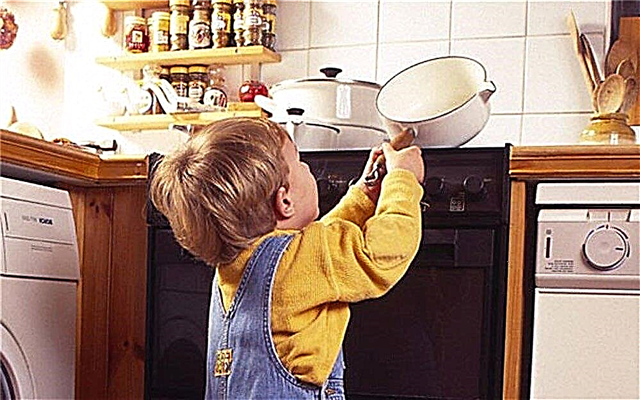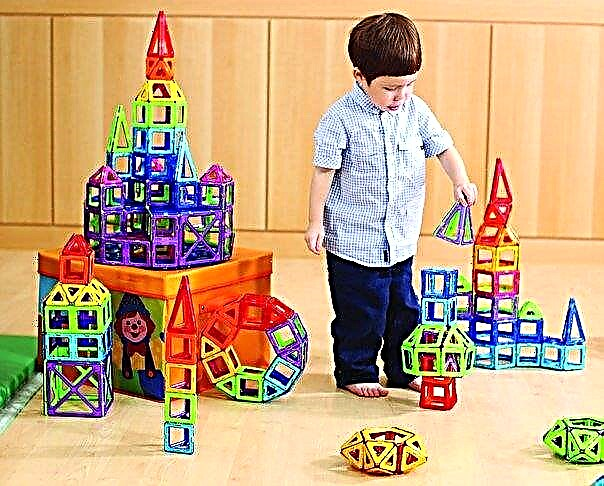The birth of a child is the most important event in the life of each of us. After being discharged from the hospital, many parents think about how and at what temperature to bathe a newborn at home. This is a very important manipulation, as it improves the health of the baby. In addition, the child gets a lot of positive emotions while bathing.

Bathing a baby for the first time is a responsible procedure for parents
First bath
There is still no consensus on whether it is necessary to bathe the child on the first day after discharge from the hospital. Therefore, it is worth considering both points of view on this issue.
In most cases, the child and mother are discharged from the hospital on the 3rd day after delivery. Naturally, the umbilical cord wound does not heal in this short time. Therefore, some experts argue that the first bath should be carried out only after the navel has healed.
Other scientists are convinced that bathing for a baby in the first days of his life is not only safe, but also beneficial. The initial stages of postembryonic development are severe stress for the body, as it enters a different habitat. In the process of undergoing water procedures, the baby falls into his native element. The most important thing is that the temperature of the bathing water for newborns is comfortable for them.
Note. A wound from the umbilical cord is a gateway for infections, so until it heals, you need to use boiled water to bathe the crumbs. A small amount of a weak solution of potassium permanganate can be added to the bath. In addition, you can use an infusion of a string or chamomile, but in very small doses. Medicinal plants have anti-allergic, sedative and anti-inflammatory effects.
Temperature for newborn bathing
Water manipulation is good for your baby's health. You can control the temperature in the bath using a thermometer. The comfortable temperature for swimming is 28-38 ° C, but it should not exceed 40 degrees.
For the first bath, the water should be 37 ° C. Over time, it needs to be brought to 27. If the baby begins to cry during the bathing process, the water needs to be made warmer. Before taking the baby out of the bath, it is poured with water from a jug.
Bathing is a healing procedure, but at first it can scare the child. To prevent this from happening, the baby is first dipped in water with a diaper, then removed. At the first bathing, only the body is immersed in the water, the face is left open.

Modern doctors allow water treatments from the first day of stay at home
What you need for swimming
It is necessary to prepare for the procedure in advance, everything you need should be at hand. The bath for bathing the child must be washed with soda, rinsed well with water, and then rinsed with boiling water. To bathe a baby, you will need the following tools and tools:
- thermometer for water;
- jug;
- diaper;
- washcloth;
- hypoallergenic shampoo or soap;
- a towel made from natural materials;
- a comb with blunt ends;
- undershirt;
- diaper;
- jumpsuit from jersey;
- antiseptics for the treatment of the umbilical wound;
- baby oil or skin cream;
- cotton pads.
Why monitor water temperature
The baby's skin is very delicate and thin, the thermoregulatory mechanisms in the body have not yet been formed, which is why children freeze and overheat so easily. Even adults with overheating in the bathroom can feel bad, and even more so for babies. When steaming on the child's skin, pores open, which greatly facilitates the process of infection penetration into them. In cold water, the child experiences discomfort, he will constantly cry, in addition, there is a high probability of developing inflammatory reactions in the urinary tract.
Council. Considering all of the above, the temperature of the water in the bathroom must be controlled very carefully. During the implementation of water procedures, it is also necessary to monitor the general well-being of the child. The water temperature in the bath should be slightly higher than in the room.

Checking the temperature of the water in the bath
Signs of heatstroke
Parents are more afraid of "freezing" babies than overheating, but in vain. After all, metabolic processes in their body are accompanied by the production of a large amount of heat. It is necessary to get rid of its excess, but it is impossible to do this under a warm blanket or in a woolen jacket.
Sometimes in babies, the body temperature rises to 37.5 ° C, this is a completely normal situation. Some doctors argue that it is enough to re-entangle the newborn just a few times, and heat exchange will be disturbed.
Overheating of the body provokes the development of heatstroke. This is a very dangerous condition for the baby's body, as it develops a number of complications that can even lead to death. At moments of overheating, the child may have the following symptoms:
- hyperemia of the skin;
- increased sweating;
- nausea;
- lethargy;
- drowsiness;
- vomiting;
- dyspnea;
- cardiopalmus;
- a sharp rise in temperature (sometimes it rises to 38.4 ° C).
During heatstroke, a child's fever can last up to 2 days. With hyperthermia, the child is vomiting. Its appearance indicates an average degree of heatstroke. In this case, you need to urgently call an ambulance. Your child should be given plenty of fluids before the doctor arrives. You can make a compress on your forehead with a little salt (for 0.5 liters of water, 1 tsp. Kitchen salt). The water temperature should not be low, but slightly higher than room temperature, so as not to cause reflex vasospasm.

You can find out how much and at what temperature you need to bathe a newborn baby with a doctor
How to organize the optimal temperature correctly
Bringing your baby's bathing water to a comfortable temperature is easy. Cold boiled water is poured into the baby bath. Next, a water thermometer is placed in the bath and hot water is added little by little until the thermometer shows 36-37 degrees.
Air temperature when bathing a newborn
When bathing a baby, it is important to monitor not only the temperature of the water in the bath, but also the temperature of the air in the room. For the healthy development of the baby, the temperature in the bathroom should be comfortable for him, that is, 22-24 ° C. At this temperature, the baby and mother will feel comfortable. It is recommended to leave the door to the bathroom open during bathing, but take care of the absence of drafts. This will prevent a sharp drop in air temperature when leaving the room where the child was swimming.

Moderate heatstroke requires treatment that only a doctor can prescribe
Bathing duration
The duration of water procedures depends on the age of the child. If we are talking about how to bathe a newborn for the first time, then the baby's stay in the water should not exceed 2-3 minutes. In the second month of life, the duration of water procedures can be increased to 5 minutes. Children over six months can swim for up to 20-30 minutes. Pediatricians recommend bathing children in the evening before bedtime.
Immediately after bathing, the baby is wrapped in a warm diaper and a terry towel or blanket. In the room, the child is carefully wiped, all the folds are sprinkled with baby powder or treated with cream. Then the baby is put on a hat, sliders and a vest. After the bath procedures, the baby needs to be fed, as he is most likely very hungry. After feeding the mother should put the baby to sleep. If this procedure is followed every day, the child will very quickly get used to the regime, it will be easier to fall asleep and sleep better all night.
Bathing frequency
To keep the child's body clean, it is enough to bathe him 2-3 times a week. Babies do not yet possess excessive activity and the ability to get dirty anywhere, even where there seems to be no dirt, like babies from 1 to 3 years old. Therefore, if water procedures are due to purely hygienic motives, then such a frequency will be quite sufficient.
Herbal decoctions
Most pediatricians do not recommend bathing babies in baths with herbal or other additives, unless there are specific indications for this. The thing is that babies' skin is very sensitive to the effects of various irritants. Many herbs have a drying effect on the skin. Even the most seemingly harmless herb is capable of provoking the development of allergic reactions in a child's body.
In some cases, pediatricians prescribe medicated herbal baths. They are useful for diathesis, diaper rash, hypertonicity, etc. The most common types of medicinal herbs:
- Nettle softens delicate skin, promotes hair growth, has an anti-inflammatory effect, improves the condition of the whole body of the baby.
- Bathing for newborns reduces rashes, helps with crusts on the scalp, but also dries the skin. You can not swim in it more often 1-2 times a week.
- Bearberry and motherwort will save you from colic, help regulate the intestines.
- Chamomile for bathing newborns relieves irritation on the skin, reduces itching, gently soothes restless babies, has a good effect on the girl's urinary system.
- John's wort is good for boys. In addition, it heals wounds, helps with diathesis.
- Lavender and Valerian are recommended for restless babies. They improve sleep, relieve spasms, and are effective for rashes.
Medicinal herbs prescribed by a doctor are best purchased at a pharmacy. One Art. medicinal raw materials are brewed in 0.5 l of liquid. For this, it is better to use earthenware or enamel dishes. Aluminum pots cannot be used, as the metal reacts with the components of the medicine.
After boiling, the broth is infused for at least an hour. After the specified time, the extract is filtered through cheesecloth. Pour 30-50 ml of infusion into the bath. Before using the broth, a test must be performed. To do this, the specified solution is applied to a small area of the baby's skin, if there is no allergic reaction, the product can be used for bathing.
Council. Only freshly prepared herbs are used for bathing a newborn. In baths with additives, you should not bathe your child more often than 3 times a week.
Crying during and after swimming
Babies love to swim, as water is their element, it has a sedative effect. Sometimes there may be cases when a child begins to act up and cry during the period of water procedures. What's the matter?
The main reasons for this behavior are as follows:
- the temperature regime is violated;
- large bathroom;
- fear;
- stress;
- discomfort in the bath;
- sharp immersion in water;
- the appearance of teeth;
- nutritional and neurological problems;
- the wrong time for water procedures (the baby is hungry or sleepy).
There are several factors that cause a baby to cry after swimming:
- a sharp change in temperatures;
- hunger and thirst;
- an excess of emotions;
- fear of the unknown;
- severe itching with skin manifestations of allergic reactions;
- pain syndrome;
- tiredness and desire to sleep;
- too high or low water temperature.
Recommendations
When bathing babies, experts recommend adhering to a few simple rules:
- it is better to bathe the baby one hour after feeding;
- monitor the temperature of water and air in the room;
- do not bathe the child on the day of vaccination;
- do not lather large areas of the body, as the baby may simply slip out of the hands;
- for bathing, use only high-quality hypoallergenic cosmetics for children.
Bathing for a child is not only one of the elements of his daily routine, but also the first step towards adult development. Such a habitual occupation for us brings the baby undeniable benefits. For example, water hardening is much softer than air hardening. In addition, water treatments relieve muscle tone and eliminate colic.



